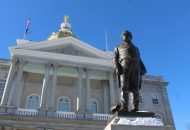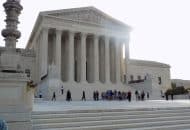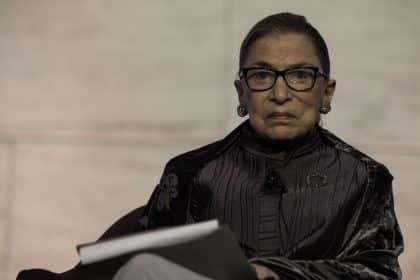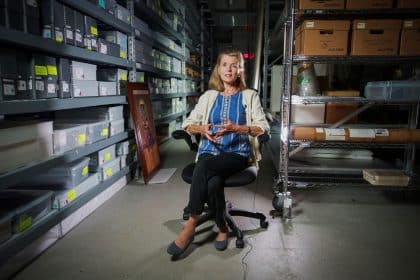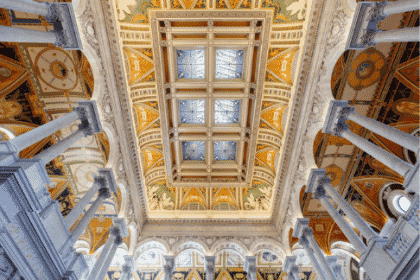Library of Congress Launches ‘Collective Memories’ Exhibit

WASHINGTON — The nation’s oldest federal cultural institution, the Library of Congress, opened a new exhibition last week featuring rare artifacts from its voluminous trove of largely unseen national treasures.
The exhibition comprises an extensive collection of images, diaries, voice recordings, manuscripts, photographs, art, books and more.
Suitably named “Collecting Memories: Treasures from the Library of Congress,” the exhibition will be available for the public to enjoy and ponder through December 2025 in the library’s Thomas Jefferson Building.
Billionaire philanthropist David Rubenstein donated $10 million to the library and the Treasures Gallery, where the exhibition is located, has been named in his honor.
Monica Smith is the chief of Informal Learning and Engagement at the Library of Congress, and works to make the Library more accessible to families and children from 8 to 15 years old. Smith told The Well News on Saturday that along with the new exhibition, the Library hosts free, family-friendly events once a month.
“We’re very excited to have this permanent Treasures Gallery. Things in it will rotate, because you have to rotate materials. They can only be in the light (for) so long,” in order to preserve the older artifacts, Smith said.
There are eight important themes that divide the over 120 materials on display into different sections. Below is a non-exhaustive list of some of these items.
Memorialization and Commemoration
On display were the contents of Abraham Lincoln’s pockets the night he was assassinated.
Smith said this part of the exhibition is particularly interesting to her.
“The personal part of that, I think, is a really good reminder that these are real people, not just…figures on pedestals,” Smith said.
Lincoln’s handwritten draft of the Gettysburg Address is also shown. He delivered this speech in late 1863 after one of the bloodiest battles of the Civil War that was considered a turning point for the Union against Confederate forces.
The original design plan for the Washington Monument was created by architect Robert Mills. Although Mills died during its construction and some of his ideas were scrapped, his idea — to design a tall obelisk in honor of George Washington — was incorporated into the structure.
Homeland
This section of the exhibition contains several photographs of refugees from distant countries who immigrated to the U.S. in search of better lives.
One of these people, Pete Pin, was born in a refugee camp near the border of Cambodia and Thailand but was brought to the U.S. as a baby. Pin’s relatives escaped the Khmer Rouge, a regime in Cambodia that ruled from 1975 to 1979. This period, also referred to as the Cambodian Genocide, resulted in the deaths of almost a third of all Cambodians who were considered enemies of the regime or those who perished from starvation, disease or overwork.
Pin started a project in 2010 to photograph Cambodian American refugees and his work is on display.
Collected Stories, Collective Experience
The Library obtained a transcript of an interview that took place in 1937 of a Black woman who was born free and was enslaved when she was ten years old.
M. S. Fayman was born in 1850 into a wealthy Creole family in Louisiana. As a young child, she was sent to a private school to obtain an education. When she was 10 years old Fayman was kidnapped by a White slave trader.
She was held at a slaveholding farm in Kentucky. Her first language was French, which was spoken at her home in Louisiana and at the private school she attended before she was abducted. She was forced to teach French to the children of Pierce Buckran Haynes, who was a slave trader and plantation owner.
With the help of another woman, she escaped in 1864 and returned to her family. She later finished her education and became a teacher at Fisk University in Nashville, Tennessee.
Compendium of Knowledge
On display is the first map of the U.S. compiled, printed and published in America by an American. One of only seven known copies to exist in the world, the map in the Library is known to be the best preserved of this edition.
Another map, from the expeditions of explorers Meriwether Lewis and William Clark, is featured.
The Louisiana Purchase was a sale of territory to the U.S. from France in 1803 which more than doubled the size of the country. The West was unmapped and unexplored at the time, so Congress funded Lewis’ and Clark’s expedition. Their map was published in 1814 and is the first printed map to display fairly accurate information of the land to the west of the Mississippi River.
Another item on display is a bridal gown, designed by Cuban artist Rolando Estévez, which consists of black fabric along with forty-five scrolls portraying illustrations and lines of poetry. This work of art serves as a tribute to poets Maya Angelou and Emily Dickinson, among others.
Personal Narrative
Mary Church Terrell was a suffragist and civil rights activist. Terrell sparked a major breakthrough for the civil rights movement when in 1950, at the age of 86, she protested the segregation of a restaurant in Washington, D.C. This led to the Supreme Court ruling that segregated eating facilities were unconstitutional. The typed draft of Terrell’s autobiography is shown in the exhibition with multiple edits in pencil, on pages yellowing with age.
Other famous items are the original drawings for the comic “Amazing Fantasy no.15”, featuring the Amazing Spider-Man, who is dressed in his costume complete with the character’s signature web shooters.
Omar Ibn Said’s autobiography, written in Arabic, is also shown. Ibn Said was a Muslim scholar born near the modern-day border between Senegal and Mauritania. Ibn Said was sold into slavery in South Carolina and was later enslaved in the household of the former governor of North Carolina from 1828 to 1830, John Owen. Ibn Said was kept in this household until his death.
Recording and Retelling
Displayed in this section are several photographs of the first nuclear bomb exploding at a test site in 1945. The American military detonated an atomic bomb over Hiroshima less than a month later.
Haruo Shimizu created a handwritten account of the bombing of Hiroshima for an American soldier he befriended during the U.S. occupation of Japan. Shimizu was affected by radiation poisoning from the bombing. His account was written on paper one year after the bombing in 1946.
“Sounds of an Era” was created by radio producer Fred Friendly and journalist Edward R. Murrow. On the recording “they narrated montages of speeches, eyewitness accounts, and entertainment — some recreated but most from original radio broadcasts,” according to the Library. Visitors can hear the audio recording which includes the D-Day Invasion, Lou Gehrig’s eloquent departure from baseball and other significant moments.
Guiding Memory
Oscar Hammerstein II wrote the lyrics for the famous song “Do-Re-Mi” in the The Sound of Music, an award-winning Broadway musical and film. His lyric sheets contain multiple edits, as seen in the exhibition.
The Sumerians in Mesopotamia (modern-day Iraq) invented cuneiform, an ancient system of writing mostly written on clay tablets. Scribes learned to write by marking tablets in school. Some of these tablets — with markings by students from thousands of years ago — can be seen.
Mechanics of Memory
The founder of psychoanalysis, Sigmund Freud, wrote a letter to a confidante and fellow physician. This letter describes Freud’s theories on how memory works and is preserved in this section.
A marine named Leon Frank Jenkins survived the bombing of Pearl Harbor and fought in WWII. Jenkins was discharged with a diagnosis of psychoneurosis and his family said he dealt with Post Traumatic Stress Disorder the rest of his life. His diary entries are portrayed in this section.
You can reach us at [email protected] and follow us on Facebook and X.















